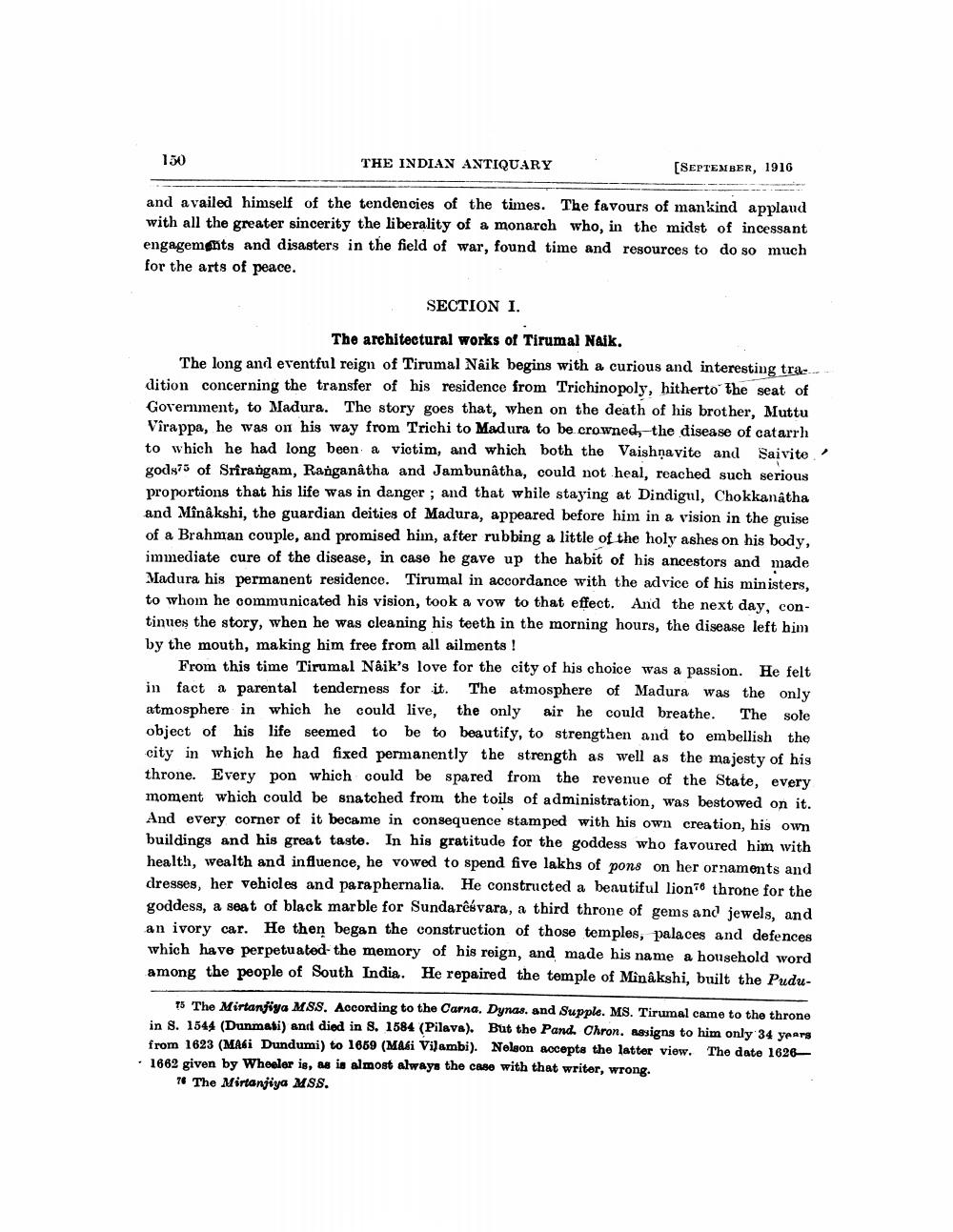________________
150
THE INDIAN ANTIQUARY
[SEPTEMBER, 1916
and availed himself of the tendencies of the times. The favours of mankind applaud with all the greater sincerity the liberality of a monarch who, in the midst of incessant engagements and disasters in the field of war, found time and resources to do so much for the arts of peace.
SECTION I.
The arehitectural works of Tirumal Naik. The long and eventful reign of Tirumal Naik begins with a curious and interesting tra... dition concerning the transfer of his residence from Trichinopoly, hitherto the seat of Government, to Madura. The story goes that, when on the death of his brother, Muttu Vîrappa, he was on his way from Trichi to Madura to be crowned, -the disease of catarrh to which he had long been a victim, and which both the Vaishnavite and Saivite gods75 of Srirangam, Ranganâtha and Jambunatha, could not heal, reached such serious proportions that his life was in danger; and that while staying at Dindigul, Chokkanatha and Mînakshi, the guardian deities of Madura, appeared before him in a vision in the guise of a Brahman couple, and promised him, after rubbing a little of the holy ashes on his body, immediate cure of the disease, in case he gave up the habit of his ancestors and made Madura his permanent residence. Tirumal in accordance with the advice of his ministers, to whom he communicated his vision, took a vow to that effect. And the next day, continues the story, when he was cleaning his teeth in the morning hours, the disease left him by the mouth, making him free from all ailments!
From this time Tirumal Nâik's love for the city of his choice was a passion. He felt in fact a parental tenderness for it. The atmosphere of Madura was the only atmosphere in which he could live, the only air he could breathe. The sole object of his life seemed to be to beautify, to strengthen and to embellish the city in which he had fixed permanently the strength as well as the majesty of his throne. Every pon which could be spared from the revenue of the State, every moment which could be snatched from the toils of administration, was bestowed on it. And every corner of it became in consequence stamped with his own creation, his own buildings and his great taste. In his gratitude for the goddess who favoured him with health, wealth and influence, he vowed to spend five lakhs of pons on her ornaments and dresses her vehicles and paraphernalia. He constructed a beautiful lion76 throne for the goddess, a seat of black marble for Sundarêśvara, a third throne of gems and jewels, and an ivory car. He then began the construction of those temples, palaces and defences which have perpetuated the memory of his reign, and made his name a household word among the people of South India. He repaired the temple of Minakshi, built the Pudu
15 The Mirtanjiya MSS. According to the Carna. Dynas. and Supple. MS. Tirumal came to the throne in s. 1544 (Dunmati) and died in 8. 1584 (Pilava). But the Pand. Chron. Assigns to him only 34 years from 1623 (MAGi Dundumi) to 1669 (MaGi Vi)ambi). Nelson accepts the latter view. The date 1626– • 1662 given by Wheeler is, as is almost always the case with that writer, wrong.
76 The Mirtanjiya MSS.




